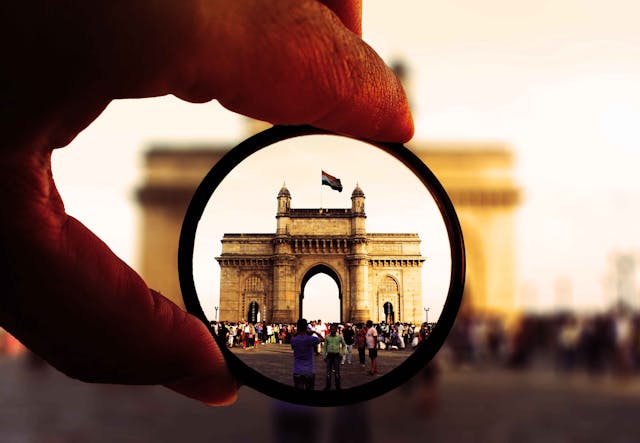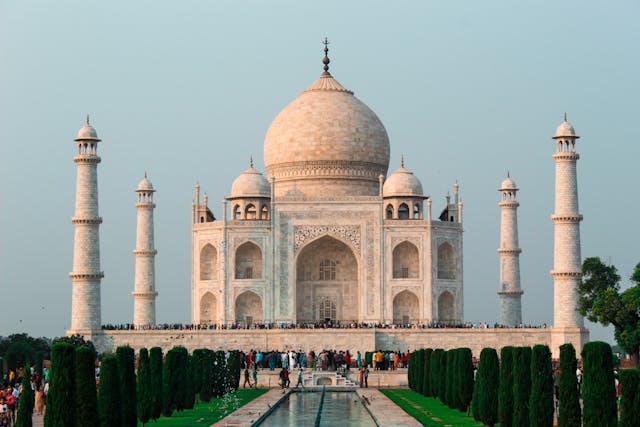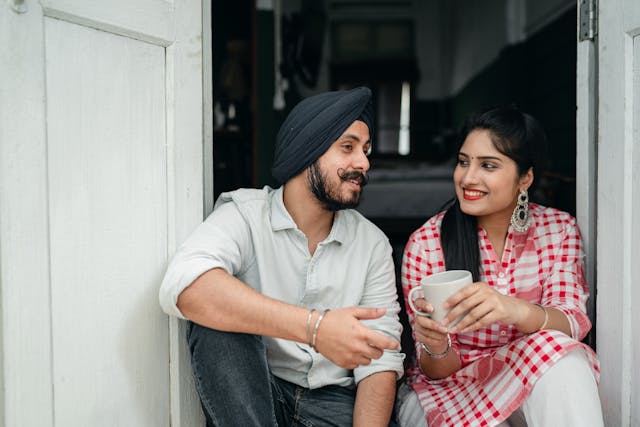10 Tips for Traveling in India I Wish I’d Known Before

India is a land of contrasts—vibrant, captivating, and, at times, overwhelming. From bustling markets and ancient temples to serene landscapes and diverse cultures, it’s a country that promises unforgettable memories. But it’s also a place where the unexpected can happen, so knowing tips for going to India can save you from a few surprises. To make the most of your adventure, staying safe and preparing for challenges is key. With that in mind, here are 10 tips for traveling in India I wish I’d known before packing my bags!
→Find a Native Tutor and Start Learning a Language Now←
1. Get Your Plans in Order Before You Go
India is enormous, and with such a vast range of sights and activities, planning ahead is essential. Whether it’s booking hotels, securing train tickets, or arranging tours, being organized will save you from the chaos that can come with last-minute decisions. Train reservations, in particular, are snapped up months in advance, and flights tend to get pricey closer to departure. As part of your tips for traveling in India, try to map out your trip carefully to cover everything you want to see without rushing.
The weather also plays a crucial role. While the months from October to March are generally ideal, you may need to adjust your plans if you’re visiting during India’s monsoon or summer heat. But even with careful planning, India can throw a few curveballs. Politics, festivals, or unexpected downpours might disrupt your schedule. The best approach? Go with the flow!
2. Don’t Overpack Your Itinerary
With so many breathtaking destinations, it’s tempting to try and see everything in one go—but trust me, that’s a rookie mistake! India’s sheer size makes it nearly impossible to cover all the highlights in one trip. Instead of attempting to tick off every city on your list, focus on a few key places. Traveling between cities can be time-consuming, and if you cram too much in, you’ll end up exhausted.
For a more immersive experience, try exploring lesser-known regions like Ladakh or Kerala. These off-the-beaten-path gems offer a break from the chaos of the more tourist-heavy areas and let you dive deeper into India’s rich culture. And, if time’s tight, the Golden Triangle (Delhi, Agra, and Jaipur) is an excellent, albeit well-trodden, starting point. How to prepare for a trip to India means thinking realistically—less is often more!

3. Watch Out for Scams
India is a fantastic place to visit, but it’s also home to a variety of scams that can target unsuspecting tourists. To keep your trip stress-free, being aware of these common traps will go a long way. One of the most frequent scams involves taxi drivers who try to overcharge, take longer routes, or even claim you gave them less money than you did. A tip from experienced travelers: only use registered taxis, or opt for services like Ola and Uber to ensure you don’t fall into these traps. Another popular scam is counterfeit money—often when you hand over a larger bill, someone may swap it with a fake one and claim you gave them a counterfeit note. Always try to pay the exact amount to avoid these shady tricks.
In crowded areas, be cautious of pickpockets. Distracting tactics like bumping into you or dropping items are often used to grab your wallet when you’re off guard. Keeping your valuables in front pockets and splitting your cash between different places can help reduce your losses. Additionally, when visiting popular tourist spots, avoid unauthorized guides. Many pose as experts but will offer little in return for your money. Stick to official guides, or if possible, use pre-recorded audio guides to enjoy a hassle-free experience. By staying alert and following these tips for going to India, you’ll be better prepared to avoid any unpleasant surprises!
4. Brace Yourself for Culture Shock
India is a country of contrasts, and the cultural differences can be intense for first-time visitors, especially for Americans. From the moment you step off the plane, you’ll notice a level of noise, activity, and crowds that can feel overwhelming. Airports can be chaotic, with taxi drivers and touts competing for your attention. This rush of attention can be startling, so it’s wise to stay calm, have a pre-arranged ride, and avoid engaging with unlicensed drivers.
On the roads, the sheer chaos may catch you off guard. Traffic laws seem to take a backseat, and the roads are shared by cars, motorbikes, and even cows! Pedestrians must adapt quickly to the art of dodging vehicles. Unlike the orderly traffic Americans are used to, Indian streets are a constant swirl of honking horns and unpredictable movements. But after a few days, you’ll likely adjust and might even find yourself darting across the streets with the locals.
The sheer volume of people and lack of personal space may also be quite jarring. Crowded markets, public transport, and busy tourist spots can make it feel like there’s no room to breathe. It’s common for locals to stare at foreigners out of curiosity, which might make you uncomfortable at first. And don’t be surprised if someone asks to take your photo or, in some cases, snaps one without asking! Staying aware of these cultural differences and keeping a sense of humor will help you navigate the more intense moments and enjoy your trip.
Knowing how to prepare for a trip to India can help minimize these shocks and ensure a smoother experience.
5. Pack Light and Shop Local
When preparing for your journey, it’s tempting to overpack, but trust me, it’s better to keep it simple! India offers an incredible shopping experience, and you’ll likely end up buying more than you anticipated. From vibrant clothing to handcrafted souvenirs, you’ll want extra space in your luggage for all your new treasures. So, instead of bringing too many clothes, pack just the essentials and leave room for shopping.
As for medicines, there’s no need to bring an entire pharmacy with you unless you’re staying in a remote area. India has a wide variety of pharmacies, including standard, Ayurvedic, and homeopathic options, so you can easily find anything you might need. However, it’s wise to carry a few basics with you, especially for common travel ailments like diarrhea. Make sure to pack a high SPF sunscreen and a universal adapter for charging your devices, as these are must-haves for your trip.
Here’s a quick how to prepare for a trip to India checklist of what to pack:
- Light, breathable clothing
- Diarrhea tablets
- High SPF sunscreen
- Charging adapter (universal)
- Comfortable walking shoes
- Basic toiletries (you can buy the rest in India)
- A local SIM card for easy communication
6. Dress Modestly
In many parts of India, modesty in clothing is highly valued, especially for women. Both men and women will have a smoother experience by opting for loose, breathable outfits that cover the arms and legs. It’s essential to keep swimwear confined to beach areas, as it’s common to see locals swimming fully clothed. To blend in more easily, you might want to purchase traditional Indian garments. Men could try wearing a kurta pyjama (a long tunic paired with loose trousers), while women can go for a salwar kameez (a long top, loose pants, and a matching scarf).

7. Respect Religious Etiquette
Religion plays a central role in Indian life, and proper behavior at religious sites is crucial. Many temples, mosques, gurdwaras, and other places of worship have specific rules that must be followed. Some temples and mosques restrict entry to followers of the faith, and mosques might not allow visitors during prayer times or on Fridays. Always remove your shoes when required, and prepare to cover your head with a scarf or shawl when entering religious buildings. Wearing clothing that covers your legs and arms is usually expected—keeping a sarong in your bag can be a lifesaver.
It’s also important to avoid pointing the soles of your feet toward people or religious icons, as this is seen as highly disrespectful. In temples, refrain from touching idols or people on the head, and when visiting Hindu and Buddhist sites, walk in a clockwise direction as a sign of respect. Small offerings or donations are often expected, but beware of anyone pressuring you into making large contributions.
8. Learn the Art of Haggling
Haggling is an integral part of shopping in India, especially at markets and street stalls. For many vendors, offering an inflated price is just the start of a negotiation. Tourists, especially those unfamiliar with bargaining, may find themselves paying much more than necessary. A good rule of thumb is to start by offering around 60% of the asking price and work your way to a fair middle ground. Be polite, stay calm, and always remember that haggling is part of the culture, so enjoy the experience rather than seeing it as a hassle.
9. Mastering Local Transport
Navigating India’s diverse landscape requires an understanding of the local transportation system, which offers a variety of options based on your destination, time constraints, and personal preferences. Here’s a breakdown of the most popular modes of transport and how to use them efficiently.
Domestic Flights
For long distances, domestic flights are the quickest option. India’s airline network is extensive, with budget airlines like Indigo and Vistara leading the way in efficiency and service. Be aware that baggage limits are typically 15kg, less than what international flights allow, so pack accordingly. Don’t forget to carry the debit or credit card you used to book your flight, as airlines might ask to verify it at check-in. While flying saves time, it can also mean missing out on the scenic beauty that other modes of transport offer. This how to prepare for a trip to India tip could make all the difference when planning your route.
Trains
A journey by train is an essential part of any visit to India. Indian Railways is not only the third largest employer in the world but also offers some of the most scenic routes across the country. From the Mumbai-Pune sunrise ride to the Rajdhani Express connecting Delhi and Kolkata, trains provide a glimpse into India’s diverse landscapes and cultures. Though booking train tickets requires patience (and often advance planning), it’s worth the effort for the experience. Many routes fill up quickly, so consider using a travel agent to book your tickets in advance.
It is also important to understand the different classes before jumping in. If you’re new to Indian trains, you might want to avoid sleeper or general class right away. Instead, opt for 2AC (second class with air conditioning) or CC (chair car) for a more comfortable experience. If you prefer a higher level of comfort, consider 1AC (first class with air conditioning) or EC (executive chair car).
Some of the top trains in India include the Shatabdi and Rajdhani, so aim to book one of these for the best experience. Just be aware that on overnight trains, the toilets are often not cleaned during the night, so plan accordingly when booking.
Train travel truly allows you to immerse yourself in the country, making it one of the best tips for traveling in India.
Buses
For reaching smaller towns or regions without railway connections, buses are a reliable option. Each state has its own bus service, like the Kerala State Road Transport Corporation (KSRTC), which operates buses within Kerala. On longer routes, overnight sleeper buses—particularly the high-end, air-conditioned Volvo buses—are a popular choice among travelers. Buses tend to be easier to book last-minute than trains, which makes them a good backup plan if you’re unable to secure a train ticket.
By mastering the different transportation options, you’ll be able to explore India efficiently while soaking in all its vibrant scenery and culture.
10. Learn Hindi Before Traveling
One of the most valuable tips for traveling in India is to learn some Hindi before you go. While English is widely spoken in urban centers and tourist spots, knowing even basic Hindi can make a huge difference, particularly in the northern and central regions. In cities like Delhi, Jaipur, and Varanasi, as well as rural areas across Uttar Pradesh, Bihar, and Rajasthan, Hindi is often the primary language for everyday interactions. Being able to communicate in Hindi can help you connect with locals on a deeper level, whether you’re haggling at a market or asking for directions. It also reduces the chances of misunderstandings at crucial moments, such as when you’re negotiating transportation or ordering food.
Learning Hindi is not only practical, but it’s also incredibly rewarding. Locals will appreciate your effort and are often more open and friendly when you speak to them in their native language. A simple “Namaste” or “Shukriya” (thank you) can go a long way in building positive relationships and enhancing your travel experience.
→Find a Native Tutor and Start Learning a Language Now←
To prepare for your trip, take lessons with a Hindi tutor from LovLan. On our platform, you’ll find experienced tutors who can match your availability and adapt their teaching methods to suit your language-learning style. Whether you’re a complete beginner or looking to brush up on conversational skills, LovLan can help you find the perfect Hindi tutor to make your travel to India more enriching and enjoyable.


